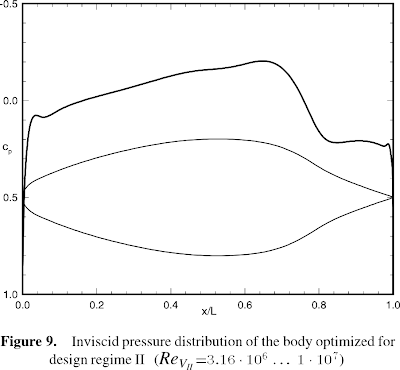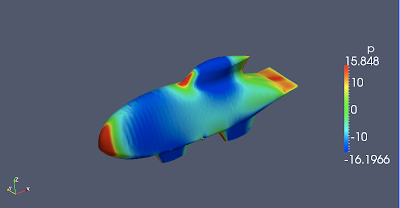There is still a lot to learn. This is what a professional thinks about my job:
Here's some tips, but please consider that everything depends upon where you want to get with this job. If you want to get numbers as close as possible to the real ones (let's say CFD can do that…) than you need something "more", while if this is something you did to practice with openFoam, then it's already more than ok! So, I'll give you some advises as if you were selling this simulation to a company. Otherwise you can even ignore them.
1. Domain:
Your car is 3m long. Your domain is 2 car lengths in front of the car, 5 in its back, 5 lengths wide and 3 lengths tall. Now, the width is slightly ok, you could possibly have it from Y-10 to Y+10 anyway. You should definitely increase it along the X direction. I'd say bring it from X-12 to X+30. Also increase it's height up to Z+10.
2. Volume Mesh
You have 4 refinement regions around your car. Probably 3 would be ok as well. You should extend two of them (the coarser ones) down to the end of the domain. Also increase the width of these two. The coarsest of all should be at least twice as wide.
3. Surface Mesh
Your surface mesh is pretty much ok, but you should have smaller cells on the fairings, otherwise you may end up with a separation in that regions and that would increase your drag. Also, the trailing edge of the fairings is pretty bad, especially for the wheel's fairings (see image attached). You have two ways to improve those: a. separate them into a different stl file (or stl region) and give them a finer mesh level within the sHM dictionary; b. use featureEdges (probably the best solution in this case). For a case like this you should probably end up with, at least, 20M cells (you have 5M cells now). You probably want to run your case in parallel splitting your domain among the number of processors you have available.
4. Iterations
500 iterations is definitely too low. You'll probably need 2000 of them to get to a good convergency.
5. Forces
You should average your forces among the last 500 iterations.
6. Log
Always send the output of every command to a log file. This is useful for a large number of reason. One of them is that if you have your solver log (in this case the simpleFoam log) you can run foamLog and make sure you case actually got to converged results.
7. Layers
You have 10 layers on you car… that's really a lot! I would stick to 3 layers maximum and, since the lower face of the domain is a wall, I would have 2 layers on it as well.
8. Wheels
Your car is missing the wheels, which are a quite important component for the aerodynamics. You could use a rotating reference frame on them and use MRFSimpleFoam as a solver to solve the car with the wheels as if they were rotating!
9. Plots
I saw the pictures on your blog. Sorry, but you cannot get anywhere with those… You should use a smaller scale and possibly change the color schema to something more "traditional", for instance look at the image attached.
10. Movies
I made a small movie. You can find it in the folder in dropBox. I think a movie is something quite nice to show and it's more impressive to people than pictures.







































